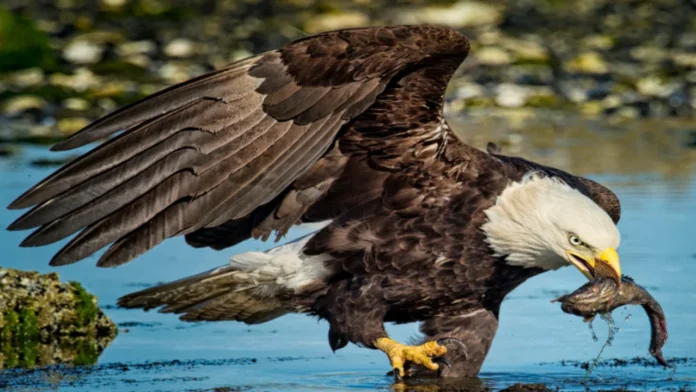Top 5 Unique Traits of the Hancock Bird You Didn’t Know About
October 9, 2024

Have you ever heard of the Hancock Bird? If not, you’re in for a treat. This fascinating creature stands out in the avian world with its unique traits and intriguing behaviors. From its striking appearance to its essential role in ecosystems, the Hancock Bird is a true marvel of nature. Join us as we uncover some surprising facts about this remarkable bird that will make you see it in a whole new light! Whether you’re an avid birdwatcher or just curious about wildlife, there’s something here for everyone. Let’s dive into what makes the Hancock Bird so special!
The Unique Appearance of the Hancock Bird
The Hancock Bird is a visual marvel. Its plumage boasts an exquisite blend of vibrant colors, with deep blues and rich greens that shimmer in the sunlight. This stunning coloration serves not just for beauty but also as a form of camouflage among its natural surroundings.
One striking feature is its elongated tail feathers, which can stretch impressively during mating displays. These feathers create an enchanting fan effect, captivating potential mates with their elegance.
Another unique aspect lies in their large, expressive eyes. The prominent eye markings add to the bird’s charm while providing excellent vision for spotting prey or predators from afar.
With such distinctive traits, the Hancock Bird stands out dramatically against any backdrop. Whether perched on a branch or soaring through the sky, it leaves observers mesmerized by its graceful presence and colorful display.
Surprising Facts About the Hancock Bird’s Behavior
The Hancock Bird is full of surprises when it comes to its behavior. One fascinating trait is its intricate courtship dance. Males perform elaborate displays, puffing out their feathers and hopping around to attract a mate.
These birds are also known for their intelligence. They can solve complex problems, such as using tools to access hard-to-reach food sources. Observers have noted them crafting makeshift instruments from twigs or leaves.
Another surprising aspect is their vocalization skills. Hancock Birds possess a wide range of calls that serve different purposes—some are used for communication within the flock, while others act as territorial warnings.
Social structure plays a crucial role in their behavior too. These birds often form tight-knit groups, showcasing impressive cooperative hunting strategies that enhance their survival rates in the wild.
The Habitat and Distribution of the Hancock Bird
The Hancock Bird is primarily found in the lush, temperate forests of North America. Its preference for dense canopies makes these environments ideal. Here, it thrives among towering trees and abundant underbrush.
These birds have a penchant for mountainous regions but can also be spotted in lowland areas with rich vegetation. Their adaptability allows them to navigate various habitats, from mixed woodlands to riparian zones.
Interestingly, they are migratory creatures. Seasonal changes prompt their movement toward warmer climates during winter months. This migration pattern showcases their resilience and flexibility.
While some populations remain relatively stable, others face challenges due to habitat loss and environmental changes. Understanding where the Hancock Bird resides helps conservationists target efforts more effectively.
With ongoing studies into their distribution patterns, researchers continue uncovering new insights about this remarkable species’ range and habits.
Conservation Efforts for the Hancock Bird
Conservation efforts for the Hancock Bird are gaining momentum as awareness spreads. Various organizations are working tirelessly to protect its habitat from urban development and pollution.
Community engagement plays a pivotal role in these initiatives. Local volunteers participate in clean-up drives that enhance nesting areas, ensuring the birds have safe environments to thrive.
Research projects focus on tracking their migration patterns, helping scientists understand how climate change affects them. This data is essential for creating effective conservation strategies tailored specifically for the Hancock Bird.
Education programs in schools foster appreciation among younger generations. By teaching kids about this unique bird, we inspire future advocates who will continue preservation efforts.
Every effort counts towards securing a future where the Hancock Bird can flourish alongside us. Together, we can make a difference and ensure that this captivating species remains part of our ecosystem for years to come.
The Role of the Hancock Bird in its Ecosystem
The Hancock Bird plays a vital role in its ecosystem. As an insectivore, it helps control the population of insects. This natural pest management is crucial for maintaining the balance within its habitat.
Moreover, these birds are excellent pollinators. While feeding on nectar from various flowers, they inadvertently transfer pollen between plants. This act promotes biodiversity and encourages healthy plant growth.
Their nesting habits also contribute to their environment. By creating nests in trees and shrubs, they provide shelter for other species once abandoned. This creates a network of life that supports many organisms.
Additionally, the Hancock Bird serves as prey for larger predators. It forms part of the food web, ensuring energy circulates throughout the ecosystem effectively.
Understanding this bird’s role highlights how interconnected nature truly is and emphasizes the importance of every species within its community.
Conclusion: Why the Hancock Bird is Truly One-of-a-Kind
The Hancock Bird is a remarkable creature, captivating bird watchers and nature enthusiasts alike. Its unique traits set it apart from other avian species. From its striking appearance to its fascinating behaviors, the Hancock Bird continues to surprise us.
Understanding its habitat reveals how adaptable this bird can be. The various environments it inhabits showcase not only its resilience but also the delicate balance of ecosystems where it thrives. Conservation efforts highlight our shared responsibility in protecting such extraordinary wildlife.
Recognizing the role the Hancock Bird plays within its ecosystem emphasizes how interconnected we all are in nature’s web. This special bird teaches us about biodiversity and the importance of preserving natural habitats for future generations.
Whether you’re an experienced ornithologist or simply someone who appreciates nature’s wonders, learning about the Hancock Birds enriches your understanding of our world. With every new discovery, we gain a deeper appreciation for these magnificent creatures that grace our skies.